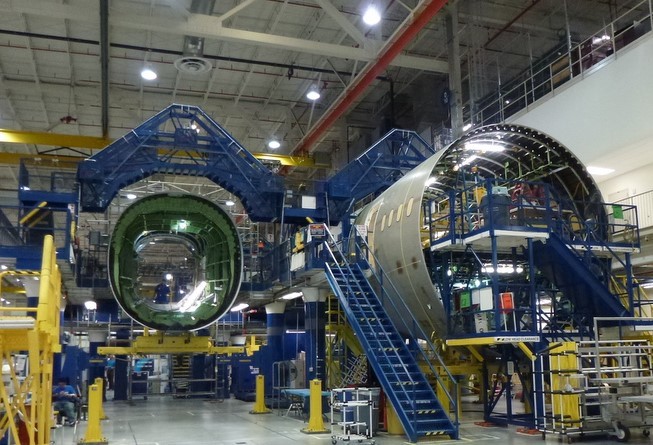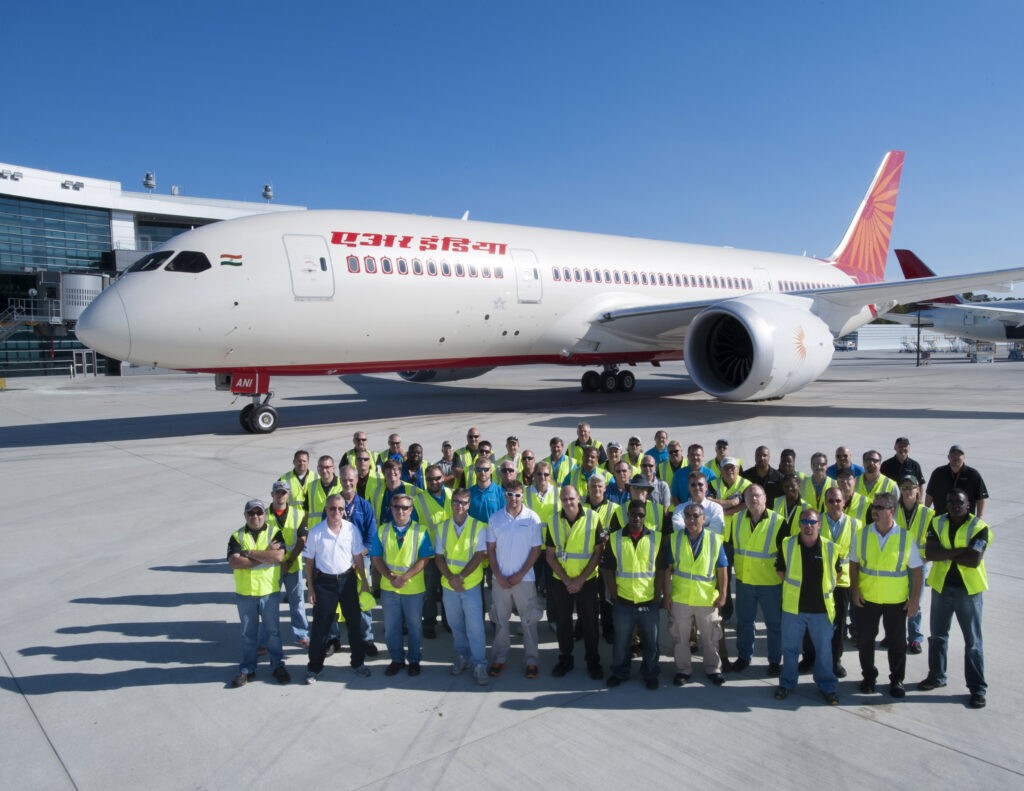
As if the criticism of the Boeing 737 Max wasn’t enough, The New York Times has expanded its attention from design and certification of the Max to the assembly and flight testing of the last new airliner Boeing produced; the 787 Dreamliner.
A front-page story on Sunday indicts the planemaker for a host of safety infractions at its South Carolina Dreamliner assembly plant. Former workers at the plant say when they were working there, they complained about safety violations and a get-it-done-fast-if-not-right attitude.
I have heard similar stories since 2013 when I began reporting on the 4-month grounding of the Dreamliner due to the propensity of its cutting edge lithium-ion batteries to smoke and fume. That problem hasn’t been fixed. The batteries have simply been sheathed in titanium so that the toxic fumes from a battery in thermal runaway can be piped overboard as I wrote for Gizmodo in 2015.

ANA Flight 692 on the tarmac at Takamatsu airport after its emergency landing. Photo courtesy of passenger Kenichi Kawamura
I was told, employees in the South Carolina plant who expressed opinions that differed from management were shunned, investigated, demoted or humiliated, sometimes all of the above, or fired. The Times reporters apparently heard similar stories.
Which brings me to Luis Perez. Recruited from an aviation services company to work at the South Carolina plant, Perez was an experienced aircraft technician with an airframe and powerplant certification. Shortly after he started in 2011, he took a six-month course taught by Boeing’s 787 Everett flight line workers in Texas. On return to South Carolina, he found that a number of his co-workers or managers had not worked in aviation before. The A&P license was required for the Flightline but not the assembly line. Twelve weeks of training was all that was needed to start work building airplanes there.

“Boeing has a philosophy that a manager, is a manager, is a manager. If you had been a manager somewhere else, it didn’t matter if it was the Dairy Queen, then you have the required experience to be a manager at Boeing,” Perez told me. “It was the same for engineers, they don’t have to be aerospace engineers. They could be engineers at a tire factory or a toaster factory, whatever. Boeing was desperate for people.”
As a result, he was asked to do things that were contrary to safe practice or Boeing’s own internal policies, including being asked to fill a fuel tank before the sealants were cured or speed up a mandatory pre-flight inspection.
One day while preparing a Hainan Airways plane for the first of three acceptance flights prior to delivery to the airline, a manager and a visitor from Boeing in Everett asked Perez to replace all the fuel pumps first. Perez said he explained that task did not need to be done until the third acceptance flight “and it was a very risky and time-consuming procedure which had not been performed in Charleston in under two days.” Nevertheless, he was ordered by his senior manager to have the work done.
In trying to remove one of the pumps, he said, “technicians drove a crowbar through the aft spar of the airplane” causing so much damage it was not clear if the entire wing might need to be replaced.
Prior to the Times story, the television network, Al Jazeera aired Broken Dreams a chilling 2014 documentary examining the design and manufacturing techniques used by Boeing for the Dreamliner. I devote more than 60 pages in my book The Crash Detectives to explaining the myriad ways Boeing failed to appreciate the risks associated with using the lithium-ion batteries that took the 787s out of service. It is a remarkably similar story to what has happened with the Max.
The 787 North Charleston plant opened in 2011 and journalists were invited to tour it in 2012, which I did. That was around the time that the presence of foreign object debris (known as FOD) in the manufacturing area was such a big problem production was stopped for a few days. Federal Aviation Administration inspectors were reviewing each and every airplane when complete and workers were told the feds would not leave Charleston until planes passed inspection with a lot fewer write-ups.

In an all-hands meeting in October 2013, plant manager Jack Jones told workers, “We’re not getting better, we’re getting worse,” according to a flight line worker who attended and has since left the company.
The selection of South Carolina for the 787 plant came after the state offered an enormous tax incentive package. South Carolina also offered Boeing a union-free environment as it is a right-to-work state. Not only would Boeing benefit from the lower wage expectations in the south, it wouldn’t have to deal with pesky union rules and grievance procedures at its new location.
South Carolina may have been new to airplane manufacturing, but Boeing most certainly was not. Nevertheless, when South Carolina workers sought the expertise of their Washington State counterparts, they were often rebuffed. Many of the International Association of Machinists in Washington State felt it was a betrayal to the union to help the Southerners who had effectively taken jobs from Everett. I don’t know whether the Washington State workers or Boeing management ever reflected on the potential safety ramifications of their economic decisions.

Before leaving the Dreamliner factory, Perez filed a grievance with Boeing’s company’s ethics commission and said he later learned that changes had been made. “Boeing is an ethical company and the 787 is a very safe aircraft to fly, but unfortunately, the culture has been infected by several bad apples that cause these problems,” he told me.
Following air accidents, we often hear about the unbroken chain of events that led to them. The 737 Max disasters are no different. As crash detectives, regulators, criminal investigators, lawmakers and journalists backtrack from those fateful dates in October and March when the Lion Air and Ethiopian Airlines 737s crashed, we will see, once again how many factors contribute safety – or the lack of it.

Author of The New York Times bestseller, The Crash Detectives, I am also a journalist, public speaker and broadcaster specializing in aviation and travel.









Christine,
As a retired airline mechanic who worked on everything from cubs to 747s and the Concorde it has pained me to see the ongoing issues with the 767/KC-46 as well as the 737MAX crashes. I maintained the 767-200 during its ETOPS certification process and can attest to it being a great airplane. With 20 years maintaining 737s I know they are as good as they get as well.
The problems seen throughout the 767s conversion to a tanker for the Air Force indicate a systemic failure on the part of Boeing and the Air Force to “get it right”.
From the DOD requirements folks who decide how its going to be designed, to quality control inspectors and workers in the plant during manufacturing (not in Charleston), the reasons are many.
In the late 70s I inspected aircraft direct from the factory (not Boeing) for manufacturing defects, FOD, etc. I still have the air drill I pulled out of the tail of a brand new aircraft flown from the factory.
The Times article spends much of its time using the “right to work” issue as its basis for many of the problems at the Charleston plant. Its much more complex than that and its unfortunate that they chose to focus on that, obviously politically driven.
As someone who learned how to work on airplanes in nonunion South Carolina I can assure you there are plenty of people (down south) that can build an airplane with the right management and processes in place.
Would it help if it were a union shop, perhaps, but the issues are much, much deeper than that. I know it, and Boeing knows it.
Its past time for Boeing to step up and “get it right”.